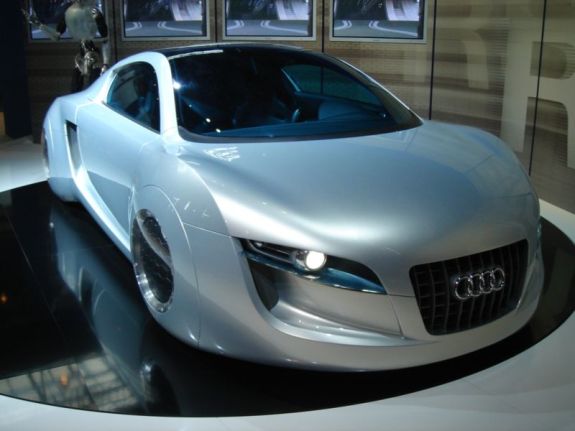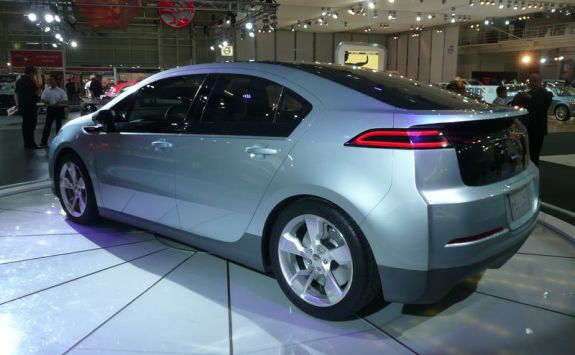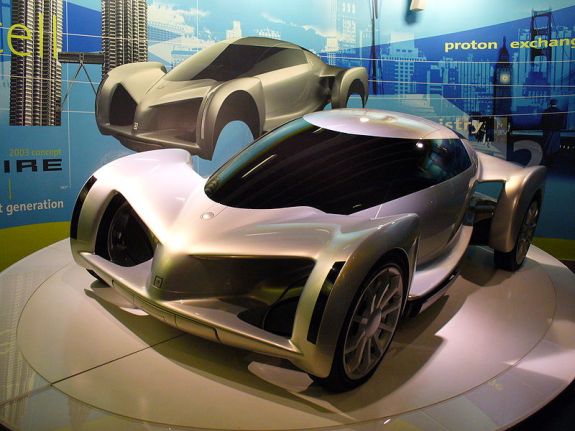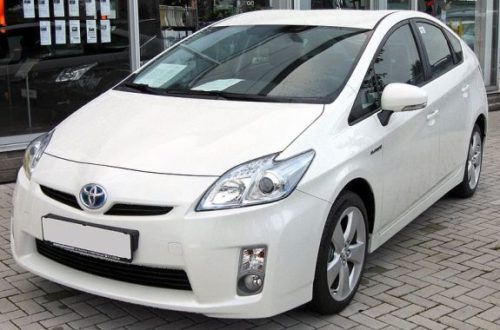Future Car Technologies
New cars are being developed in order to make them more sustainable, safer, more energy efficient, and less polluting. These won’t exactly be the cars we’ve seen in science-fiction movies, but they should be a big improvement over what we have today.
 The Audi RSQ sports coupé from the 2004 film I, Robot.
The Audi RSQ sports coupé from the 2004 film I, Robot.
It was envisioned as being motivated by spherical “wheels”.
More energy efficient cars
First of all, car manufacturers are working on increasing the energy efficiency of their cars. Today’s conventional automobiles operate at about 15% efficiency. The rest of the energy is lost to engine and drive-train inefficiencies and idling. Therefore, the potential to improve fuel efficiency with advanced technologies is enormous. Below are some examples of such technologies:
- Regenerative braking: When conventional brakes are used, 30% of the energy is lost in the form of heat. Regenerative braking uses this energy to recharge the batteries in a hybrid vehicle.
- Turbosteamer: BMW’s Turbosteamer concept uses energy from the exhaust gases of the traditional Internal Combustion Engine (ICE) to power a steam engine which also contributes power to the automobile. This can increase energy efficiency by up to 15%.
- Ultra-low-drag vehicles: Using computational fluid dynamics in the design stage can produce vehicles having much less drag. This means that it would take significantly less energy to push through the air, a major consideration at highway speeds. The Volkswagen 1-litre car and Aptera 2 Series are examples of ultra-low-drag vehicles.
- Compressed air hybrid: Researchers at Brunel University in Britain came up with an engine design which forces highly compressed air into the engine, which they claim reduces fuel consumption by 30%.
Better materials
Today’s cars built with lighter materials use less energy but are more vulnerable to collision accidents. Unfortunately stronger materials are usually also much heavier, so the manufacturers have to chose between lightness and strength. However, all this could change with the development of new materials that are both strong and light. Such materials include duraluminum, fiberglass, carbon fiber and carbon nanotubes. They could totally replace all steel in cars in the near future.
Cars with alternative energy sources
Alternative energy sources are being researched for future cars. They include electric cars, hydrogen cars, and compressed-air cars. More efficient car batteries are being developed so that they could store more energy and be quickly recharged.

The car above is a Chevrolet Volt. It is a plug-in hybrid electric car that has been on sale in the U.S. since mid-December 2010.

Another example is the General Motors Hy-wire hydrogen car pictured above.
In a second part to this article, a more extensive review of different alternative energy cars will be made.
Conclusion
In the end, let us hope that when those engineering marvels do come out, that they will be affordable to the general public.
Next article in this series: Future Car Technologies – Alternative Fuel Vehicles
Would you like to receive similar articles by email?



2 Comments
Paul Tomaszewski
Thanks for the comment! 🙂
I’ll do my best to answer those questions in the sequel to this article.
Harry
I do agree these are better [not far from what we see in Sc-Fi movies] , new materials and alternate energy source and all are good , but the main point is will these be affordable , and what’s the cost of replenishing those new energy sources , like how much electricity will be used to re-charge a car battery …